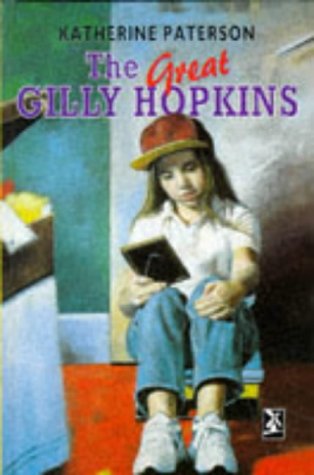Foster Care in Children’s Books
As mentioned earlier in our CCA conversation about foster care, my initial introduction to the issue and idea of fostering came through a series of novels I read as a child. They were the Elizabeth Gail series by Hilda Stahl. I devoured these books, re-read them, loaned them to all my friends and anxiously awaited the next intallment as they made their way from the US to Australia. The series is about a girl (Elizabeth Gail – otherwise known as Libby) who comes to live with a Christian foster family and about the various struggles and adventures she had becoming part of that family. Looking back over my life I can see just how important this series was in introducing me not only to the concept of foster care, but also the issues a child in care faces – particularly around identity, belonging and links with birth family – and a Christian response to these. Now, as a writer and lover of books as tools for children, I can see just why and how this was possible.
Books become bridges for readers. They encourage empathy, allow readers to explore potentially dangerous issues in safety and learn through the fictionalized experiences of others. In children’s books this aspect of reading is even more powerful. Children’s books don’t have to skip over the tough issues of life. They can address them, sensitively, gently and compassionately so that child readers can confront life’s unavoidably tricky spaces (like grief, fear, kindness, hardship, abuse, neglect etc) from the safety of fiction.
For families who do foster care, and even (especially?) those who do not, novels and stories that contain foster care can be tools for healing and education. Children in families directly impacted by foster care will find such novels to be reassurance that they are not the only ones facing these types of issues (and this is true for all children impacted by foster care, not just the children removed from their parents). It can be very isolating to feel that you are the only one with a foster cousin, or the only foster child at school etc.
For families who are not directly impacted, stories about foster care can provide narratives in which to explore compassionate responses for the many children who are in care, and potential future friendships etc.
These days I keep my eyes open for books that involve foster care in their story-line or characters. Here are a few worth noting:
 The Great Gilly Hopkins by Katherine Paterson is a novel about a 12 year old girl recently placed in a new foster home. She’s got a lot to deal with, including a plan to be reunited with her mum, and is a tough gritty character you end up loving. For readers aged 10 up. (This book is due to be released as a movie later in the year.)
The Great Gilly Hopkins by Katherine Paterson is a novel about a 12 year old girl recently placed in a new foster home. She’s got a lot to deal with, including a plan to be reunited with her mum, and is a tough gritty character you end up loving. For readers aged 10 up. (This book is due to be released as a movie later in the year.)
The Story of Tracey Beaker, by Jacqueline Wilson is told in first person (with childlike illustrations) by 10 year old foster child, Tracey. It is her ‘Life Story’ and shows clearly the variety of issues, rejections, heartaches and stubborn resilience children in care have. For readers aged 8 and up.
 Jayden Goes to Foster Care, by Corine Hyman is a picture book story about a child moving into a new foster care placement and learning to adjust. It shows interactions with birth family, acknowledges a child’s sadness and the slow steps to finding a new sense of belonging. This book would be a good tool for families with foster children. For ages 4 up.
Jayden Goes to Foster Care, by Corine Hyman is a picture book story about a child moving into a new foster care placement and learning to adjust. It shows interactions with birth family, acknowledges a child’s sadness and the slow steps to finding a new sense of belonging. This book would be a good tool for families with foster children. For ages 4 up.
Have you found any great stories, novels or picture books that include foster care in their story-lines? If so, please share links and recommendations below!

